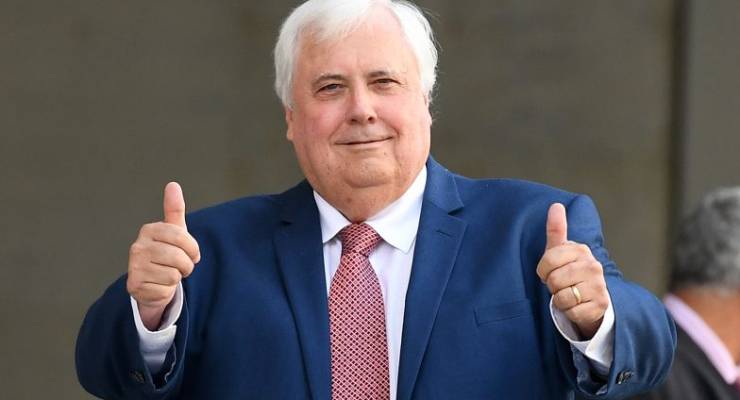
A grim reality we’ve been denying for so long is now impossible to ignore: Australia is increasingly polarised. Perhaps as bitterly as the Brits, if not as badly as the Americans. And their experience suggests that won’t change any time soon.
We’re certainly evenly split. With the government on track for 75 to 77 seats, this will be the third election of the last four that has resulted in a hung parliament or near-hung parliament. The first time in 2010 was deemed an accident; the second put down to Malcolm Turnbull’s poor campaigning and Mediscare. Now, it’s starting to resemble a pattern.
But more dramatic is how polarised the electorate is. Labor picked up a swing in Victoria — off an already high vote — of 1.75%, and is currently on 52.3% in two-party preferred terms. In South Australia, where results have returned to normal with Nick Xenophon’s retirement, Labor is currently on over 56% in 2PP terms. In Queensland, the same party, with the same policies, went backwards by 3.6% off an already low vote and is currently under 43% in 2PP terms. In Western Australia, Labor went backwards by nearly 2% and is under 45% in 2PP terms.
But in Queensland and WA the shift from Labor wasn’t to the Coalition: the LNP primary vote is currently on a quarter of a per cent swing; in WA, the Liberals went backwards by nearly 2% in house seats. It was the far right that gained votes: in Queensland, One Nation was up over three percentage points to 8.69% statewide in the lower house and nearly 10% in the Senate, picking up a spot there. Clive Palmer’s mob attracted nearly 3.5% in House of Representatives seats; Bob Katter’s party held steady at around 2.5% and even Oswald Mosley is currently sitting on 40,000 votes. In WA, the swing to the right wasn’t quite so pronounced, but still noticeable: One Nation managed 5% of the vote and Clive Palmer 2% in the lower house.
That One Nation was still able to garner such results even after being exposed as traitors seeking help from foreign extremists to undermine our gun laws, should further sound the alarm — as if the antics of neo-Nazis supporting Mosley wasn’t clear enough — that there is something disgusting and dangerous lurking in the crawlspace of Australian politics.
It’s also clear that climate change is fundamentally dividing Australia between well-educated, middle and high-income urban Australians who understand it is a global emergency and lower-income voters who see it as, at best, a third-order issue and who continue to see extractive industries as key to their future.
It was in more affluent seats in Melbourne that Labor did best in Victoria. It was the very affluent Warringah that expelled the denialist Abbott; the very affluent Wentworth where Kerryn Phelps took a politics-as-usual candidate down to the wire. But in Queensland, particularly regional Queensland, anything but outright denialism now seems politically toxic.
There’s a clear gap of mutual incomprehension and hostility in Australia, between people who are frightened by what we’re doing to the planet and want urgent action to stop it for the sake of their children and grandchildren, and people frightened for their economic future who want security for their children and grandchildren, regardless of the wider cost.
As the US and UK examples show, once electorates are polarised, it becomes very difficult to reconcile them again. Leavers and Remainers are even more bitterly divided than ever three years on from the Brexit referendum. US politics is now cemented in a deeply toxic polarity, frightening even by the standards of the Obama years.
Some respond by calling for unity and mutual understanding. But how can you understand someone whom you regard as fundamentally wrong or insane? What common ground can a coal miner have with someone who wants to ban coal mining? What understanding can an advocate of climate action have for someone who rejects all evidence of climate change? How can anyone understand a bigot who wants to hurt or drive out minorities?
Others respond in a different way, and we’ve already seen it here. Polarisation creates political opportunities to exploit if you have the resources. Typically it’s wealthy figures or existing members of the elites, who pretend to be outsiders to the system that they’re a core part of in order to attract votes. Trump is one such; Boris Johnson and Nigel Farage too. Here it’s Clive Palmer, even if his tens of millions in advertising only bought a few votes. Pauline Hanson, too, though her resources were her wealth from decades of sponging off taxpayer election funding, and the high profile the mainstream media gave her.
It’s no wonder, at a time when electoral divisions are growing ever wider, such actors appeared to exploit it. Don’t expect it to end any time soon.








Crikey is committed to hosting lively discussions. Help us keep the conversation useful, interesting and welcoming. We aim to publish comments quickly in the interest of promoting robust conversation, but we’re a small team and we deploy filters to protect against legal risk. Occasionally your comment may be held up while we review, but we’re working as fast as we can to keep the conversation rolling.
The Crikey comment section is members-only content. Please subscribe to leave a comment.
The Crikey comment section is members-only content. Please login to leave a comment.